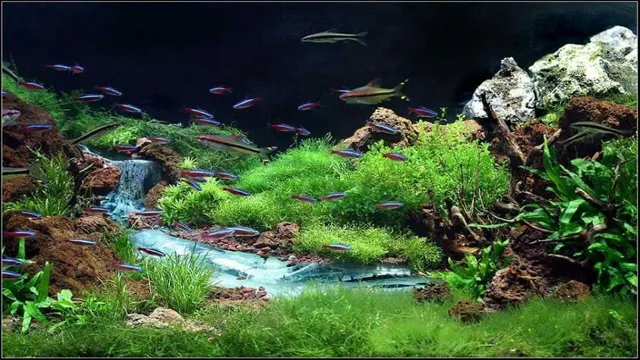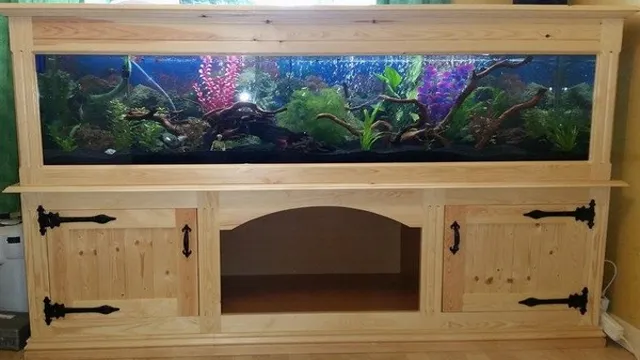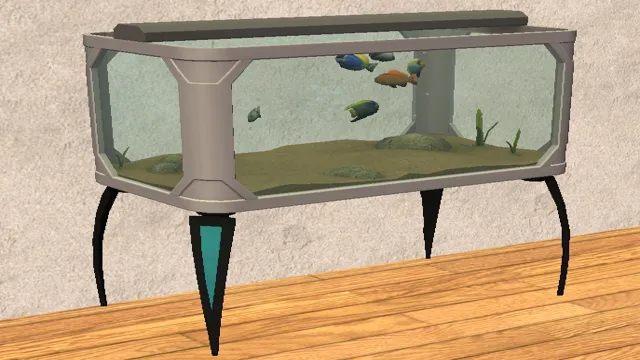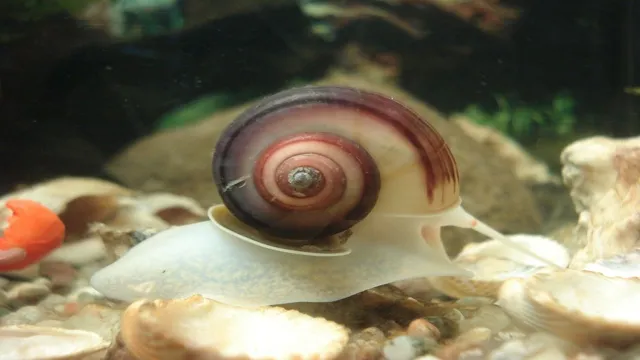How to Cycle an Aquarium with Fish: A Complete Guide for Beginners
If you’re new to keeping aquariums, you may be wondering how to go about cycling your tank with fish swimming around. It can be a bit overwhelming, but fear not! Cycling your aquarium with fish is completely possible and can be done successfully if you follow a few key steps. First things first, let’s talk about what it means to cycle your tank.
In simple terms, it’s the process of establishing beneficial bacterial colonies in your aquarium that can convert ammonia (a harmful substance) into nitrite, and then into nitrate. These bacteria are crucial for maintaining a healthy and stable environment for your aquatic pets. Now, the traditional approach to cycling a tank involves adding pure ammonia and using a testing kit to monitor levels until the bacteria colonies are established.
However, cycling with fish is a bit different and requires some careful steps to ensure the process goes smoothly. One of the most important things you can do when cycling with fish is to start with a small, well-stocked tank. Overcrowding can lead to high levels of ammonia, which can be harmful to your fish.
You’ll also want to feed your fish lightly during the cycling process and perform regular water changes to keep ammonia levels under control. Remember, cycling your aquarium with fish isn’t a one-time event. It’s an ongoing process that requires patience and attention.
But with a little bit of dedication, you can successfully establish a healthy and thriving aquatic environment for your fish to enjoy.
Introduction
If you’re a new aquarium owner, learning how to cycle an aquarium with fish can seem like a daunting task. However, it’s an essential process that ensures the health and well-being of your aquatic pets. Essentially, cycling refers to the development of beneficial bacteria in your aquarium’s filter media and substrate.
These bacteria are crucial for breaking down harmful toxins in the water that can harm your fish. To begin the cycling process, it’s important to invest in a high-quality water testing kit that measures ammonia, nitrite, and nitrate levels. Then, introduce a small number of fish to your tank and monitor the water conditions carefully for the next few weeks.
During this time, you’ll likely see a spike in ammonia levels, followed by a rise in nitrite levels. Once your tank has developed sufficient beneficial bacteria, these levels should begin to drop, indicating that cycling is complete. Remember to perform regular water changes throughout the cycling process to keep your fish healthy and happy!
Why Cycle an Aquarium with Fish?
Aquarium cycling is an important process for establishing a healthy environment for your fish. While there are different methods for cycling, introducing fish during the process can provide numerous benefits. First, it allows for a more accurate representation of the environment your fish will ultimately inhabit.
Cycling with fish ensures that the bacteria colony is established under the same conditions and waste production as your eventually stocked fish. Second, it can help to speed up the cycling process. The presence of fish produces waste, which in turn produces ammonia – a vital nutrient for the growth of beneficial bacteria.
Without this waste, the bacterial colony may not establish as quickly. Keep in mind, it’s important to start with a small number of hardy fish, as cycling with too many fish all at once can lead to dangerous levels of ammonia and harm to your fish. Overall, cycling with fish is a practical and beneficial approach for establishing a healthy, stable environment for your aquatic pets.

What is Aquarium Cycling?
Aquarium cycling is an essential process that newly established aquarium owners need to understand, as it is crucial for the health of the aquatic life they intend to keep. As the name suggests, aquarium cycling is the process of establishing colonies of beneficial bacteria that break down toxic compounds in the water. This process involves the addition of ammonia to the water, which provides a food source for the beneficial bacteria to grow.
As the bacteria consume the ammonia, they produce nitrites as a byproduct, which is then converted into nitrates by another type of bacteria. Once the beneficial bacterial colonies are established, the aquarium is considered cycled, and it is safe to introduce aquatic life. Aquarium cycling is a critical factor to the success of an aquarium as it establishes the biological filtration system necessary for maintaining a healthy environment for aquatic life.
Although the process may seem simple, it can take several weeks to complete, and patience is key. During this time, the water may become cloudy, and chemical levels may fluctuate as the beneficial bacterial colonies establish. It is essential to monitor the water parameters during the cycling process to ensure that toxic ammonia and nitrite levels remain at safe levels for the aquatic life.
Overall, aquarium cycling is an important process that helps to maintain a healthy environment for aquatic life and should not be overlooked by aquarium owners.
Step-by-Step Guide
Cycling an aquarium with fish can be a daunting task for anyone, but with the right steps, it can be a breeze. First things first, make sure you have a properly sized tank for the type and number of fish you plan to keep. Next, add water and a water conditioner to remove any harmful chemicals or impurities.
Now comes the crucial step of adding bacteria that will turn ammonia (fish waste) into nitrite, then into nitrate. You can buy bottled bacteria or use live plants and/or gravel from an established aquarium to add to yours. Finally, begin adding a small number of fish while monitoring the tank’s ammonia and nitrite levels, keeping them in a safe range, and doing partial water changes regularly.
It’s essential to take the time to properly cycle your aquarium to avoid any harm to your fish and ensure a healthy environment for them to thrive.
Step 1: Choose the Right Fish
Choosing the right fish is crucial when it comes to setting up a fish tank. But, with so many different types of fish available, it can be overwhelming to determine which one to pick. The key is to first decide what kind of aquarium you want.
If you’re a beginner, it’s best to opt for hardy, easy-to-care-for fish. Some examples include danios, mollies, and corydoras. For those who have a bit more experience and want to take on a bigger challenge, more delicate fish such as angelfish, discus, and neon tetras could be the perfect fit.
It’s important to research the needs of each fish species to ensure they’re compatible and can thrive in the same tank. By taking the time to choose the right fish, you’ll set yourself up for success and have a beautiful and thriving aquarium.
Step 2: Add Fish Slowly
When it comes to adding fish to your aquarium, patience is a virtue. You may be eager to fill your tank with a variety of vibrant and interesting fish, but it’s crucial to take your time and add them slowly. The reason for this is two-fold – first, it allows the beneficial bacteria in your tank to develop and establish, which is vital for a healthy and balanced ecosystem.
Second, it helps reduce the stress on your existing fish. Adding too many new fish at once can create a hostile and stressful environment that could be harmful to them and cause problems in the long run. So, start with just a few fish and allow them to acclimate to their new home over several weeks.
Your patience will pay off in the form of a thriving and beautiful aquarium. Remember, slow and steady wins the race – or in this case, the aquarium!
Step 3: Monitor Water Parameters
If you want your aquarium to thrive, it’s important to monitor water parameters regularly. This step helps ensure that water quality is at the right level, promoting the health and vitality of fish, plants, and other aquatic life. So, what should you be looking for? Start by checking pH levels, which measure how acidic or alkaline the water is.
Different species of fish have different preferences when it comes to pH, so it’s essential to keep levels in the optimal range for your fish. You should also test for ammonia, nitrite, and nitrate levels. These compounds can build up in the tank over time and harm fish if levels become too high.
By monitoring water parameters frequently, you can catch any problems early and take action to correct them. The key takeaway here is that, while it might seem time-consuming, monitoring water parameters is a crucial step in keeping your aquarium healthy and vibrant.
Step 4: Regular Water Changes
Once you have established a healthy and balanced aquarium, it’s important to maintain it regularly. Water changes are an essential part of this process as they help to remove any accumulated toxins and keep the water chemistry in check. The frequency of water changes will depend on the size of your aquarium and the number of fish you have.
A general rule of thumb is to replace 10-15% of the water every week. This ensures that the water quality remains optimal for your fish. Regular water changes also help to remove debris and waste products, stimulating the development of beneficial bacteria that are vital for the health of your aquarium.
Remember to use a dechlorinator to neutralize any chlorine that may be present in the tap water during water changes. By keeping up with water changes, you’ll be able to provide a healthy, thriving environment for your aquatic pets and ensure their wellbeing.
Step 5: Test the Water
Before diving headfirst into your pool, it’s important to test the water for safety and comfortability. This is the final step in our step-by-step guide to opening your pool for the summer. Once you’ve removed the cover, cleaned the pool’s interior, filled it with water and added the necessary chemicals, it’s time to take a dip.
Before anyone jumps in, however, it’s a good idea to check that the pH and chlorine levels are within a safe range. A pH level between 2-
8 is ideal, while the chlorine level should be between 0-0 parts per million (ppm).
A simple water testing kit can give you an accurate reading and indicate what, if any, adjustments need to be made. Testing the water ensures a safe and enjoyable swimming experience for everyone. Don’t forget to keep up with maintenance and regular testing throughout the season to keep your pool in tip-top shape.
Step 6: Balance Nitrogen Cycle
Now that you’ve set up your aquarium, added your plants, and cycled the tank, it’s time to balance the nitrogen cycle. Nitrogen is an essential element for plant growth, but too much nitrogen in the water can lead to an excess of algae and can harm fish. To balance the nitrogen cycle, you need to focus on two things: nitrate levels and water changes.
Test the nitrate levels in your aquarium regularly and aim to keep them below 20ppm. You can achieve this by doing partial water changes every 1-2 weeks, removing around 20% of the water each time. This will help dilute the nitrate level and provide your plants with fresh nutrients.
Overall, balancing the nitrogen cycle is crucial for maintaining the health of your aquatic ecosystem, so be sure to keep an eye on it regularly.
Common Problems and Solutions
If you’ve decided to add fish to your aquarium, it’s important to understand how to cycle the tank properly. This process allows beneficial bacteria to form, which will help keep your fish healthy by breaking down harmful ammonia and nitrites. One common problem that fish owners encounter is adding too many fish at once, which can overwhelm the tank’s ecosystem.
To avoid this issue, gradually add fish over a period of several weeks, starting with just one or two and increasing the numbers slowly. Another problem is not testing the water regularly for ammonia and nitrite levels. It’s essential to monitor these levels daily during the cycling process, and perform water changes as needed to keep them at safe levels for your fish.
By following these guidelines and being patient during the cycling process, you’ll be sure to have a healthy and happy aquarium for your aquatic friends.
Fish Loss During Cycling
If you’re experiencing fish loss during the cycling process, you’re not alone. This is a common issue among new aquarium owners. One of the main reasons for this problem is that the aquarium water is not properly balanced, leading to high levels of ammonia that are toxic to fish.
To solve this problem, you need to regularly test the water using a test kit and do water changes as needed. In addition, you can add beneficial bacteria to the tank to help break down the ammonia and prevent fish loss. Another solution is to introduce hardier fish species that can handle the cycling process better.
Overall, make sure you’re closely monitoring your tank during the cycling process to prevent fish loss and ensure a healthy environment for your aquatic pets.
High Ammonia or Nitrite Levels
High ammonia or nitrite levels can be a common problem in aquariums, especially for beginners. These Nitrogen compounds come from fish waste and decaying matter in the tank. If the levels of ammonia or nitrite are too high, it can cause stress or even death to the fish.
Luckily, there are solutions to this problem. First and foremost, you need to know how much food to give to your fish. Overfeeding leads to an accumulation of waste that can add up quickly, so be aware of the amount you offer them.
Another solution to reduce the number of nitrogen compounds in the water is to add beneficial bacteria to the aquarium. These bacteria can break down the ammonia and nitrite compounds into less harmful nitrate. Finally, regular water changes can help replace the contaminated water with fresh water.
Testing the water frequently and keeping it balanced are vital to maintaining a healthy environment in your aquarium. Don’t forget that the health of your pet fish depends on you, so stay vigilant in maintaining a well-balanced and safe aquatic home.
Cloudy Water
Cloudy water is a common problem that many homeowners face, and it can be caused by a variety of reasons. One of the most common reasons for cloudy water is high levels of dissolved minerals, such as calcium and magnesium. This can be solved by installing a water softener or using a water filtration system to remove these minerals from your water.
Another cause of cloudy water is a high concentration of organic matter, such as algae or bacteria. This can be solved by using a water clarifier or shock treatment to kill off the bacteria or algae in your water. It’s important to test your water regularly to determine the cause of the problem and to take the necessary steps to solve it.
With the right approach, you can enjoy crystal clear water that is safe for you and your family to use.
Stress in Fish
Stress in fish is a common issue that fish owners face from time to time. Stress can arise due to a number of reasons including inadequate oxygen levels, poor water quality, overstocking, and changes in water chemistry. If left unchecked, stress can lead to illnesses and even death.
One effective solution to combat stress is to create a peaceful environment for your fish. This can be achieved by ensuring that there is ample space for your fish to move around freely and providing adequate hiding spaces for them. Maintaining a clean and healthy aquarium environment is also crucial in keeping stress levels low.
Regular water changes and monitoring of water parameters such as pH, ammonia, and nitrate levels will help keep your fish healthy and stress-free. Additionally, introducing plants and other aquarium decorations can provide a calming effect and help reduce stress levels in your fish. By taking these simple steps, you can ensure a stress-free and healthy environment for your beloved aquatic pets.
Conclusion
In conclusion, cycling an aquarium with fish is like teaching toddlers to swim – it can be challenging, but with patience and perseverance, the rewards are worth it. By choosing hardy fish, feeding them lightly, and monitoring water parameters regularly, you can ensure a safe and successful cycling process. And remember, just like teaching toddlers to swim, it’s not about how fast you reach the finish line, but how well you care for and enjoy the journey.
“
FAQs
What is cycling an aquarium with fish?
Cycling an aquarium with fish is the process of establishing beneficial bacteria in your fish tank to efficiently break down toxic waste products like ammonia and nitrite produced by fish.
How long does it take to cycle an aquarium with fish?
It can take anywhere from 4-8 weeks for an aquarium to fully cycle with fish.
What are the signs of a cycled aquarium?
Signs of a cycled aquarium include a consistently low level of ammonia and nitrite in the water, and the presence of nitrates.
How do I add fish to a cycled aquarium?
Adding fish to a cycled aquarium should be done gradually, with no more than one or two fish added per week, to make sure the beneficial bacteria can keep up with the increased waste production.
Can I cycle an aquarium without fish?
Yes, you can cycle an aquarium without fish by using pure ammonia or fish food to simulate the waste production that fish would create.
What happens if I add too many fish before the aquarium is cycled?
If too many fish are added before the aquarium is fully cycled, the beneficial bacteria may not be able to keep up with the waste production, leading to an increase in ammonia and nitrite levels, which can be harmful to fish.
How do I know my aquarium is ready for more fish?
The ideal time to add more fish to a cycled aquarium is when the water parameters (ammonia, nitrite, nitrate levels) are consistently stable and within safe ranges, and the current fish population is healthy and active.






